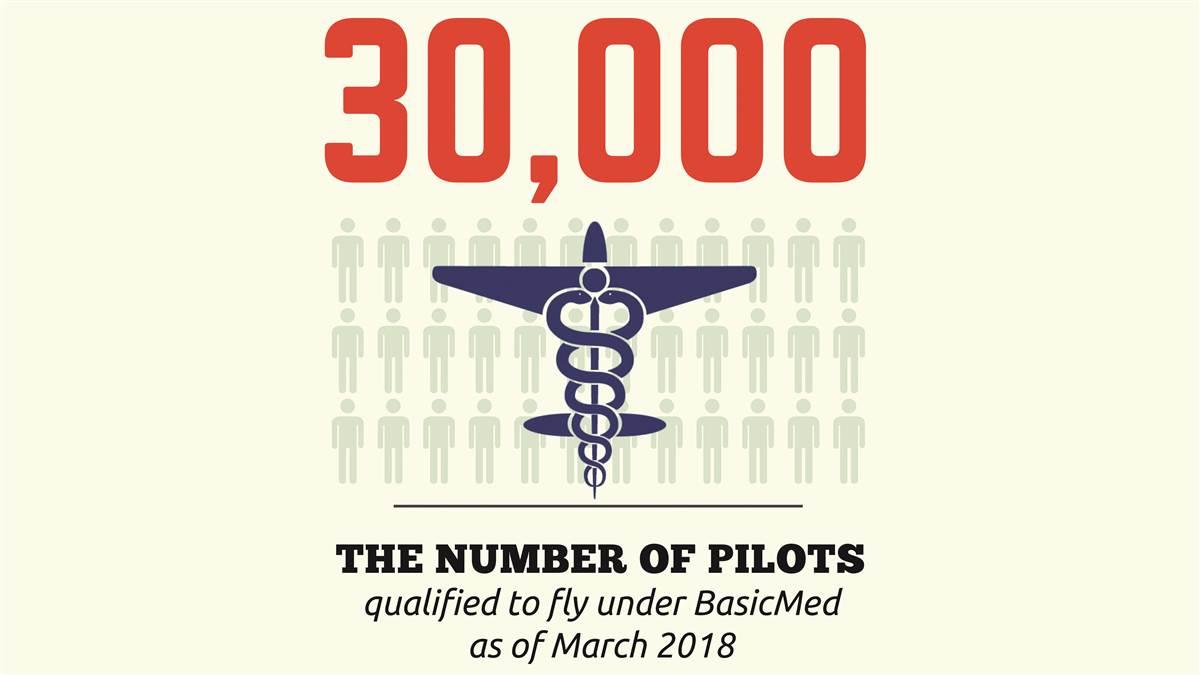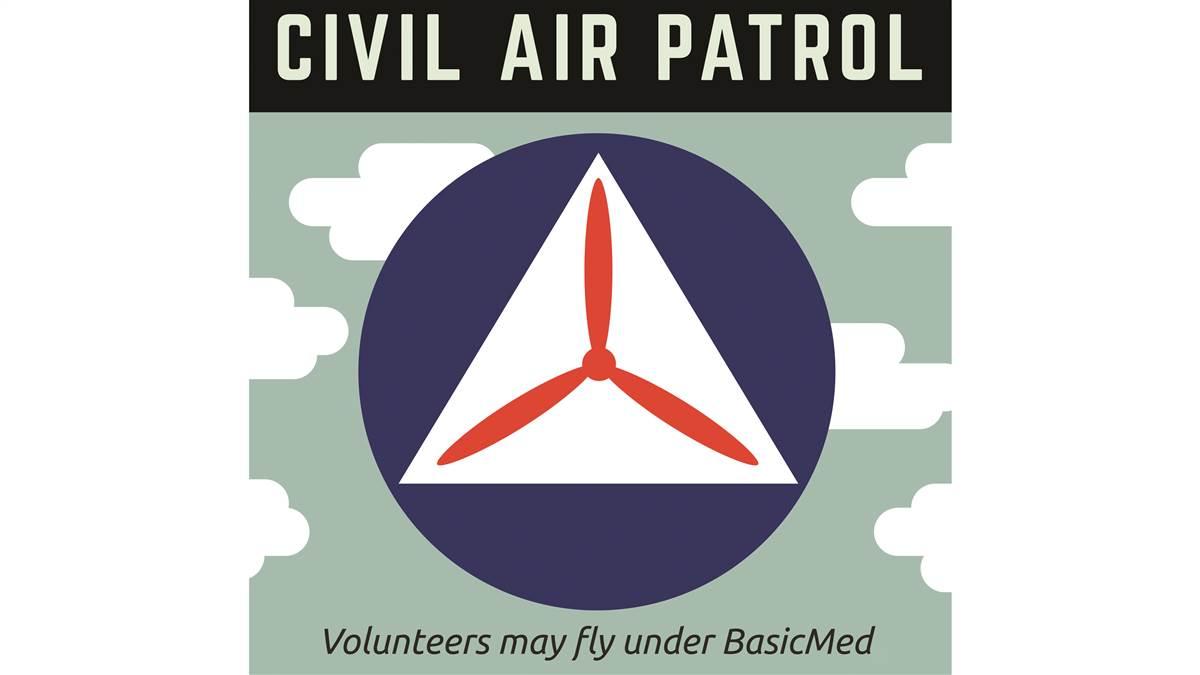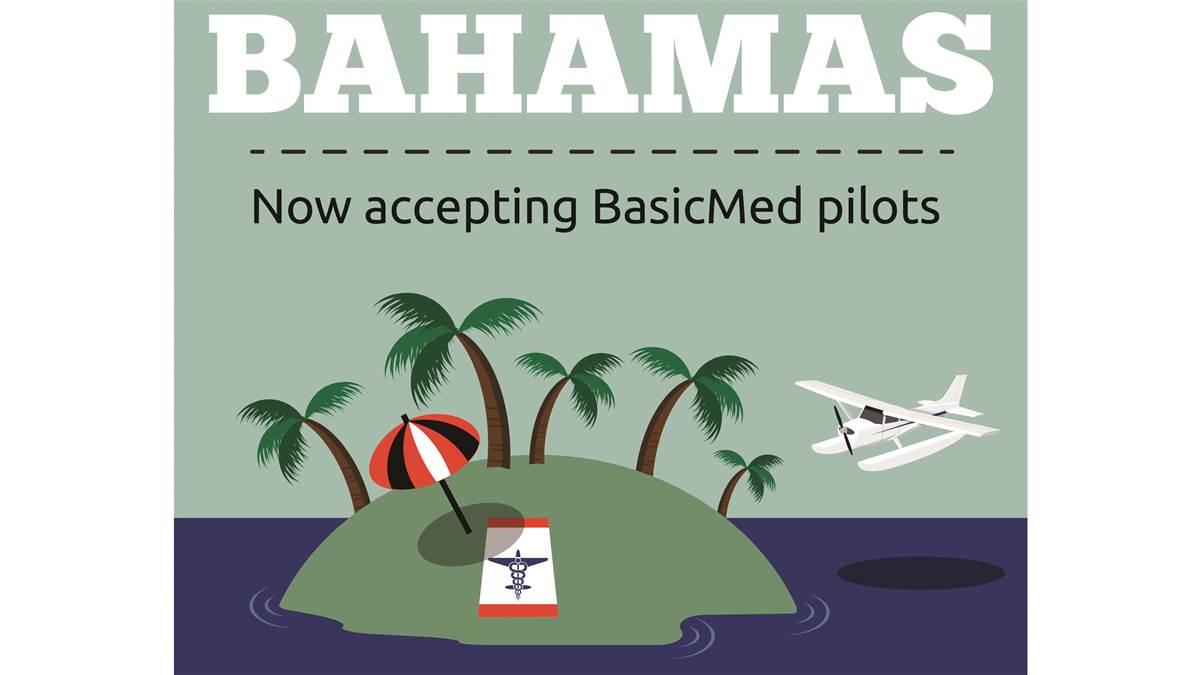AOPA Action Special Report: 30,000and counting
Approaching one year in, BasicMed surpasses expectations
The passage of third class medical reform by the House and Senate in 2016 was a victory decades in the making. AOPA had long advocated for an alternative to the third class medical certificate that would reduce bureaucracy, time, and expense while providing pilots the tools needed to better assess their own fitness to fly. When the FAA implemented its new regulations on May 1, 2017, the association was ready to support the thousands of pilots flocking to the new program. AOPA’s free online course Medical Self-Assessment: A Pilot’s Guide to Flying Healthy was the only FAA-approved BasicMed course available on day one of BasicMed, and AOPA also launched a suite of online resources designed to help pilots and physicians understand and take advantage of the new regulations.
AOPA’s advocacy for medical reform had emphasized that decisions about medical care are best left in the hands of pilots and their physicians, and that no medical certificate can replace an informed self-assessment of one’s fitness to fly. In announcing the FAA’s final rule on BasicMed, then-FAA Administrator Michael Huerta affirmed the value of this approach: “The BasicMed rule will keep our pilots safe but will simplify our regulations and keep general aviation flying affordable.”
“GA has been working for medical certification reform for decades, and with more than 30,000 pilots, BasicMed has been an enormous success and is helping pilots save time and money so they can fly more,” said AOPA President Mark Baker.

The new process provides many options. Outlined in FAR Part 68, BasicMed allows pilots to fly aircraft up to 6,000 pounds maximum certificated takeoff weight, up to 250 knots indicated airspeed, with up to five passengers, day, night, VFR, IFR, and at altitudes up to 18,000 feet msl within the United States or as authorized. Pilots must visit a state-licensed physician every four years for a physical exam that includes an FAA checklist and take an online aeromedical course every two years. As of March 23, 30,474 pilots had qualified to fly under BasicMed, and with the first anniversary of the regulations approaching, the number of participating pilots is still climbing.
The primary beneficiaries of BasicMed are pilots who want to avoid the needless time and bureaucratic hoops of a lengthy medical certification process. In many cases, renewing a special issuance or getting a new medical requires costly testing the pilot’s treating physician deems unnecessary—and that insurance won’t cover. But the rules also benefit pilots in sparsely populated areas who otherwise must travel long distances to visit the nearest aviation medical examiner and other situations.
266: Number of Rusty Pilots seminars hosted by AOPA's You Can Fly program in 2017And the concepts behind BasicMed have gained traction. Civil Air Patrol volunteers are able to fly under the regulations, and BasicMed pilots are now allowed to fly in the Bahamas. The United Kingdom took steps to improve its medical process in 2016, and pilots there now can self-assess their fitness to fly. And Australia now has introduced a medical that allows pilots to visit a general practitioner instead of an aviation medical examiner.
In anticipation of pilots returning to aviation, AOPA’s You Can Fly program ramped up its Rusty Pilots seminars, designed to help pilots transition back to the left seat after an absence. AOPA’s Pilot Information Center, which fields questions about topics as diverse as flying internationally and buying an airplane, was flooded with calls about BasicMed. The new regulations were clearly releasing pent-up demand for flying.
 AOPA’s Rusty Pilots program hosted 266 seminars in 2017, compared to 156 in 2016, and some 1,800 participants returned to flying in 2017 after attending one of the seminars. Efforts such as You Can Fly, AOPA’s multifaceted approach to making flying more accessible and affordable, work in concert with AOPA’s advocacy. Add to that more promising career prospects for aspiring professional pilots, and the future looks bright.
AOPA’s Rusty Pilots program hosted 266 seminars in 2017, compared to 156 in 2016, and some 1,800 participants returned to flying in 2017 after attending one of the seminars. Efforts such as You Can Fly, AOPA’s multifaceted approach to making flying more accessible and affordable, work in concert with AOPA’s advocacy. Add to that more promising career prospects for aspiring professional pilots, and the future looks bright.
We know that 2017 was the first year since 2010 that the total number of U.S. active pilots increased, and certainly BasicMed has helped. But as fly-in season starts and pilots flock to aviation events around the country, you might not need the numbers to tell you that.
Illustrations by John Ueland
 “What BasicMed represented was a great partnership between us in the agency but also yourselves in AOPA, the whole general aviation industry. What was really, I think, significant was really having very serious and focused conversations about fundamentally what we want to provide are incentives for pilots to take care of themselves.” —Former FAA Administrator Michael Huerta, speaking to AOPA President Mark Baker on AOPA Live
“What BasicMed represented was a great partnership between us in the agency but also yourselves in AOPA, the whole general aviation industry. What was really, I think, significant was really having very serious and focused conversations about fundamentally what we want to provide are incentives for pilots to take care of themselves.” —Former FAA Administrator Michael Huerta, speaking to AOPA President Mark Baker on AOPA Live

